Some time ago, I experienced the same issue.
Since your data is not accessible anymore, I am creating some test data in the script itself.
The problem is that you see too many labels although you are trying to limit them via
set cntrlabel {start <int>} {interval <int>}.
Let me try to explain: If you plot the contour line into a datablock you will notice that although some contour lines in the graph look like continuous lines, however, in fact, they are interrupted by empty lines in the data.
I guess this comes from the algorithm how gnuplot determines the contour lines. It seems, the more data points you have, the higher the probability that some contour lines are interrupted.
In the first graph below I made the interruptions visible by setting variable line color depending on pseudocolumn -1 (check help pseudocolumns). For the time being ignore the yellow line.
For example, the contour line for the level 8 consists of 5 pieces (i.e. 5 different colors).
This means when plotting the contour labels even if you set every 200 (or interval 10000000) you will get at least as many labels per contour line as many "broken" parts you have for that line.
Test Graph:

So, you could try to merge these interrupted lines which might be feasible, however, is not so easy because:
- you have contour lines which should not be merged, e.g. level 15 on the left side and on the right side of the graph
- you cannot easily connect the interrupted lines by simply removing the empty lines because the data points of the line parts are not in the right order
A different approach:
Hence, here is another "simple" idea, but not so simple to realize:
Define a parametric curve (yellow line in the above graph) which will intersect all the contour lines which you want to have labeled.
The script will determine the intersection points and will place a label at these positions.
The determination of the intersections is somewhat lengthy and the code is taken from here.
This procedure is certainly slow and not very efficient because it checks each yellow segment against all other segments.
Currently, the sampling of the yellow line needs to be high enough (here: N=21) such that each yellow segment will intersect with one contour line segment. The calculation time for the intersections can probably be shortened considerably if one yellow segment can intersect several contour line segments. Alternatively, the intersection lines could be filtered by level and then intersected. I will try these options asap.
If anyone has a more ideas to improve, please let me know.
Script:
### add contour labels nicely aligned
reset session
# create some test data
f(x,y) = ((4*x)**2 + (-y-5)**2)/10.
set samples 200
set isosamples 200
set table $Data
splot '++' u (x):(y):(f(x,y))
set table $Contours
unset surface
set contour
set cntrparam levels discrete 2,4,6,8,10,15,20,25,30,40
splot $Data u 1:2:3
unset table
set colorsequence classic
set style textbox opaque
set key noautotitle
set view map
# define parametric function for "line of labels"
xmin = -5.5
xmax = 5.5
N = 21
g(x) = 0.25*x**2 - 2
gx(t) = xmin + t*(xmax-xmin)/N
gy(t) = g(gx(t))
set table $LabelLine
plot '+' u (gx($0)):(gy($0)) every ::::N w table
unset table
set xrange [:] noextend
set yrange [:] noextend
# this plotting part can be skipped, it's just for illustration purpose
plot $Contours u 1:2:-1 w l lc var, \
'' u 1:2:3 every 200 w labels boxed, \
$LabelLine u 1:2 w lp pt 7 lc "yellow" noautoscale
pause -1
# some necessary functions
# orientation of 3 points a,b,c: -1=clockwise, 0=linear, +1=counterclockwise
Orientation(a,b,c) = sgn((word(b,1)-word(a,1))*(word(c,2)-word(a,2)) - \
(word(c,1)-word(a,1))*(word(b,2)-word(a,2)))
# check for intersection of segment a-b with segment c-d,
# 0=no intersection, 1=intersection
IntersectionCheck(a,b,c,d) = \
(Orientation(a,c,b)==Orientation(a,d,b)) || (Orientation(c,a,d)==Orientation(c,b,d)) ? 0 : 1
# calculate coordinates of intersection point, "" if identical points
M(a,b) = real(word(a,1)*word(b,2) - word(a,2)*word(b,1))
N(a,b,c,d) = (word(a,1)-word(b,1))*(word(c,2)-word(d,2)) - \
(word(a,2)-word(b,2))*(word(c,1)-word(d,1))
Intersection(a,b,c,d) = N(a,b,c,d) !=0 ? sprintf("%g %g", \
(M(a,b)*(word(c,1)-word(d,1)) - (word(a,1)-word(b,1))*M(c,d))/N(a,b,c,d), \
(M(a,b)*(word(c,2)-word(d,2)) - (word(a,2)-word(b,2))*M(c,d))/N(a,b,c,d)) : ""
# looping data segments for finding intersections
set print $Intersections
do for [i=1:|$LabelLine|-1] {
a = sprintf("%s %s", word($LabelLine[i], 1),word($LabelLine[i], 2))
b = sprintf("%s %s", word($LabelLine[i+1],1),word($LabelLine[i+1],2))
Line = ''
Intersection0 = ''
do for [j=1:|$Contours|-1] {
c = $Contours[j]
d = $Contours[j+1]
if (strlen(c)!=0 && strlen(d)!=0 && c[1:1] ne '#' && c[1:1] ne '#') {
if (IntersectionCheck(a,b,c,d)) {
Intersection1 = Intersection(a,b,c,d)
if ((Intersection0 ne Intersection1)) {
Level = word($Contours[j],3)
print sprintf("%s %s %s",Intersection0, Intersection1, Level)
}
Intersection0 = Intersection1
}
}
else {Intersection0 = ''}
}
}
set print
set palette rgb 33,13,10
plot $Data u 1:2:3 w image, \
$Contours u 1:2 w l lc "black", \
$Intersections u 1:2:3 w labels boxed
### end of script
Result:




